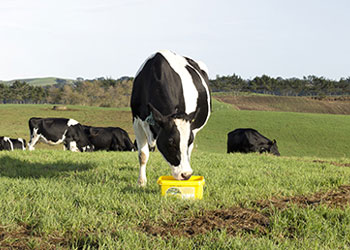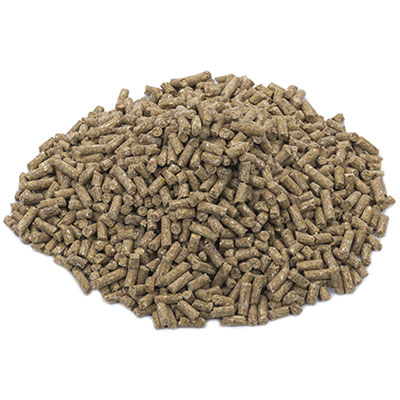Dairy Advice
What Do Your Cows Need
The premise “you are what you eat” applies universally. Ask any top athlete and you’ll hear that optimal health and excellent performance go hand in hand with nutrition know-how. High-performing modern dairy cows are no different.
They aren’t merely powered by dry matter (DM) per se, but rather its key components, including protein, fibre and energy (Did you answer correctly?). Each is an indispensable and irreplaceable part of a balanced nutrition.
Protein – the building blocks
Protein provides essential nourishment for animal growth, maintenance, reproduction and lactation. Generally expressed as percent crude protein (CP%), it is derived from nitrogenous components of the feed. Some of the nitrogen presents as ‘true protein’, compared to the less efficient ‘non-protein nitrogen’. While microbes can convert the latter into true protein, they require much more energy to do so.
True protein consists of ‘rumen degradable protein’ (i.e. protein that is readily broken down and used by the microbes in the rumen) and ‘undegradable dietary protein’ (UDP) – protein that’s not digested, hence its alternative moniker ‘bypass protein’.
The proportion of UDP depends on many factors, including the amount of DM intake, speed of rumen processing and more. It can vary tremendously, anywhere from 10% to 69% of true dietary protein.
Protein requirement for a dairy cow, as percentage of DM, broadly ranges from 12% (dry cow) to 18% (early lactation).
Fibre – for a healthy rumen
The structural material of a plant – its cell walls – is made of cellulose, hemi-cellulose and lignin, and represents the fibre content of feed. Also called roughage, it’s sometimes expressed as kg of DM, or more accurately as a percentage of the DM.
Fibre comprises digestible and indigestible parts that are collectively known as neutral detergent fibre (NDF). Its poorly digested and indigestible cousin is the acid detergent fibre (ADF). Low ADF values would indicate a high-quality feed that is very digestible. Depending on diet, a minimum of 27-35% of the total DM ration should be supplied as NDF.
Energy – for performance
Put simply, the energy in the feed helps a cow to function. It comes from carbohydrates (sugar, starch), fats and oils, and to some extent from surplus protein. Once ingested, a part of this energy is diverted to faeces, urine and gases, leaving metabolisable energy (ME) to be utilised for growth, reproduction, milk production, activity, condition and maintenance, once heat losses have been accounted for. Megajoules (MJ) measure the energy content – a high number identifies energy-dense feed.
MJ ME/kg DM values vary hugely depending on the feed quality; from 7 for poor summer pasture (browntop) to 13+ for grain. Thus, to achieve a cow’s energy requirement and produce a certain amount of milk, she would need to consume fewer kilograms of a high ME feed than of a low ME feed.
It’s worth noting that ME values derive from lab measurements and exacting conditions. In practice, they can vary substantially, depending on the digestibility of the feed and the combination of feed provided. With the digestibility of pasture being typically around 55–80%, it means that 20-45% of the ME remains unutilised. Given the variables, it’s therefore just a rough indication of feed quality!
Vitamins and minerals

Learn more about vitamins and minerals

Hi Starch
A fully balanced pellet that provides a range of starches with different break down rates. This makes the starch available in the rumen for longer and creates a more stable and efficient environment.

